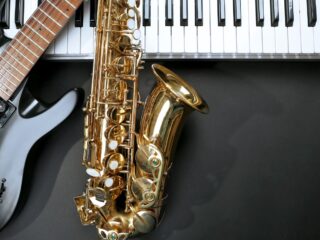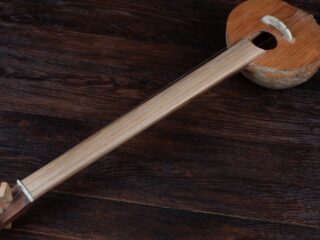Musical Instruments that Use Strings as Their Sound Source Are Called – Alat Musik Yang Menggunakan Senar/Dawai Sebagai Sumber Bunyinya Disebut
Table of Contents
Toggle
- Alat Musik Yang Menggunakan Senar/Dawai Sebagai Sumber Bunyinya Disebut
- All About String Instruments in Music
- The History of String Instruments
Alat Musik Yang Menggunakan Senar/Dawai Sebagai Sumber Bunyinya Disebut
When it comes to musical instruments that utilize strings as their sound source, Alat Musik Yang Menggunakan Senar/Dawai Sebagai Sumber Bunyinya Disebut they are commonly referred to as string instruments. These instruments produce sound by vibrating the strings when played, creating harmonious tones that enchant listeners worldwide. From the delicate plucking of a harp to the energetic strumming of a guitar, string instruments offer a diverse range of sounds and melodies.
The beauty of string instruments lies in their versatility and rich history across various cultures. Whether it’s the melodic twang of a banjo in American folk music or the intricate notes produced by a sitar in Indian classical music, string instruments have captivated audiences for centuries. Each instrument offers its unique timbre and playing technique, adding depth and complexity to musical compositions.
Exploring the world of string instruments opens up a realm of sonic possibilities, Alat Musik Yang Menggunakan Senar/Dawai Sebagai Sumber Bunyinya Disebut where each pluck or bow stroke can evoke profound emotions within both players and listeners alike. As I delve into the intricacies of these melodious creations, I uncover a tapestry woven with centuries-old traditions and innovative techniques that continue to shape the landscape of music today.
All About String Instruments in Music
When delving into the world of music, string instruments play a pivotal role. These instruments produce sound through vibrating strings and come in various shapes and sizes. From the elegant violin to the resonant cello, each string instrument brings a unique timbre to musical compositions.
Exploring the history of string instruments reveals their diverse cultural significance. Across different civilizations and eras, strings have been used to evoke emotions, tell stories, and accompany rituals. The rich  heritage of string instruments showcases their adaptability and enduring appeal in global music traditions.
heritage of string instruments showcases their adaptability and enduring appeal in global music traditions.
Among the most renowned string instruments is the guitar, cherished for its versatility across genres like classical, rock, jazz, and folk. Its melodic capabilities and rhythmic accompaniment make it a staple in bands and solo performances worldwide. Additionally, instruments like the harp and ukulele offer distinct sounds that enrich orchestral pieces or stand out on their own.
In contemporary music production, string instruments continue to captivate listeners with their organic warmth and depth. Producers often blend electronic elements with acoustic strings to create innovative soundscapes that resonate with modern audiences. This fusion of traditional craftsmanship with digital innovation highlights the timeless allure of string instruments in evolving musical landscapes.
As musicians explore new techniques and genres, string instruments remain at the forefront of experimentation and creativity. Whether plucked or bowed, these instruments embody centuries of musical evolution while inspiring fresh sonic possibilities for future generations.
Through dedication to craftsmanship and artistic expression, Alat Musik Yang Menggunakan Senar/Dawai Sebagai Sumber Bunyinya Disebut STRING INSTRUMENTS forge an enduring connection between tradition and innovation in the ever-evolving tapestry of MUSIC creation.
The History of String Instruments
Exploring the origins of string instruments reveals a rich tapestry of musical evolution spanning centuries. From ancient civilizations to modern orchestras, the journey of stringed music devices showcases human ingenuity and artistic expression.
 Early Beginnings
Early Beginnings
- String instruments trace back to ancient Mesopotamia, with artifacts like the Sumerian lyre dating over 4,000 years.
- Egypt’s harps and Greece’s kitharas further advanced stringed instruments’ development.
- The Chinese erhu and Indian sitar exemplify diverse cultural adaptations across regions.
Medieval and Renaissance Era
- During the Middle Ages, viols and lutes gained popularity in European courts and churches.
- The emergence of the violin family in Italy during the Renaissance revolutionized orchestral music.
- Notable composers like Vivaldi and Bach elevated string instruments through their compositions.
Modern Innovations
- The Industrial Revolution led to mass production of pianos, guitars, and other string instruments.
- Electric guitars transformed popular music genres in the 20th century with amplified sound capabilities.

- Contemporary artists continue pushing boundaries with experimental techniques on traditional string devices.
From humble beginnings to global prominence, STRING INSTRUMENTS have stood the test of time as pillars of musical diversity. Their melodic resonance transcends borders, uniting cultures through harmonious vibrations.
After exploring the fascinating world of musical instruments that use strings as their sound source, it’s clear that these instruments hold a special place in music history and culture. From the intricate melodies produced by violins to the rhythmic beats created by guitars, string instruments offer a diverse range of sounds that have captivated audiences for centuries.
The post Musical Instruments that Use Strings as Their Sound Source Are Called – Alat Musik Yang Menggunakan Senar/Dawai Sebagai Sumber Bunyinya Disebut appeared first on Spring Hill Med Group.


